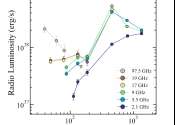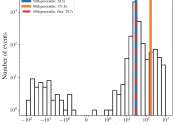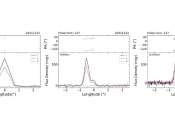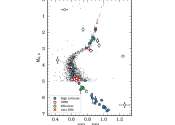Last update:
Astronomy news

The ancient Egyptian goddess of the sky: How a researcher used modern astronomy to explore her link with the Milky Way
What did our ancestors think when they looked up at the night sky? All cultures ascribed special meaning to the sun and the moon, but what about the pearly band of light and shadow we call the Milky Way?
Astronomy
May 11, 2024
0
79

Hubble Space Telescope glimpses spiral galaxy UGC 9684
The celestial object showcased in this image from the NASA/ESA Hubble Space Telescope is the spiral galaxy UGC 9684, which lies around 240 million light-years from Earth in the constellation Boötes. This image shows an impressive ...
Astronomy
May 10, 2024
0
51
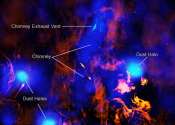
NASA's Chandra notices the galactic center is venting
Using NASA's Chandra X-ray Observatory, astronomers have located an exhaust vent attached to a "chimney" of hot gas blowing away from the center of the Milky Way galaxy. Their paper describing these results is published in ...
Astronomy
May 10, 2024
0
124
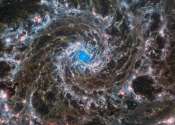
Is dark matter's main rival theory dead? The Cassini spacecraft and other recent tests may invalidate MOND
One of the biggest mysteries in astrophysics today is that the forces in galaxies do not seem to add up. Galaxies rotate much faster than predicted by applying Newton's law of gravity to their visible matter, despite those ...
Astronomy
May 10, 2024
8
1274

Astronomers are on the hunt for Dyson spheres
There's something poetic about humanity's attempt to detect other civilizations somewhere in the Milky Way's expanse. There's also something futile about it. But we're not going to stop. There's little doubt about that.
Astronomy
May 10, 2024
2
88

Astronomers propose a new stellar theory to explain the origin of phosphorus
Astronomers have proposed a new theory to explain the origin of phosphorus, one of the elements important for life on Earth. The theory suggests a type of stellar explosion known as "ONe novae" as a major source of phosphorus.
Astronomy
May 10, 2024
0
976

An abundance of distant gas-rich galaxies found by FAST
Astronomers, using the Five-hundred-meter Aperture Spherical radio Telescope (FAST) in China's Guizhou Province, have found an abundance of gas-rich galaxies in the distant universe.
Astronomy
May 10, 2024
0
8

Where space weather starts: Self-consistent propagation of flux ropes in realistic coronal simulations
The effects of space weather extend out across our entire solar system, but this is a simulation of where everything starts: the sudden, violent, emergence of a "flux rope" out of the sun's magnetic field and into the solar ...
Astronomy
May 9, 2024
0
40

NASA images help explain eating habits of massive black hole
In images from NASA's retired Spitzer Space Telescope, streams of dust thousands of light-years long flow toward the supermassive black hole at the heart of the Andromeda galaxy. It turns out these streams can help explain ...
Astronomy
May 9, 2024
0
67

Research investigates the environment of globular cluster NGC 6355
Using the Dark Energy Camera (DECam), Argentinian astronomers have investigated the environment of a galactic globular cluster known as NGC 6355. The study, presented in a paper published May 2 on the pre-print server arXiv, ...

Astrophysicists discover a novel method for hunting the first stars
A recent study led by the research group of Professor Jane Lixin Dai of the Department of Physics at The University of Hong Kong (HKU) has discovered a novel method for detecting the first-generations stars, known as Population ...
Astronomy
May 9, 2024
0
253

NASA and JAXA XRISM spot iron fingerprints in nearby active galaxy
After starting science operations in February, Japan-led XRISM (X-ray Imaging and Spectroscopy Mission) studied the monster black hole at the center of galaxy NGC 4151.
Astronomy
May 8, 2024
0
54

Solar max is coming—the sun just released three X-class flares
The sun is increasing its intensity on schedule, continuing its approach to solar maximum. In just over a 24-hour period on May 5 and May 6, 2024, the sun released three X-class solar flares measuring at X1.3, X1.2, and X4.5. ...
Astronomy
May 8, 2024
0
102

A nebula that extends its hand into space
The Gum Nebula is an emission nebula almost 1400 light-years away. It's home to an object known as "God's Hand" among the faithful. The rest of us call it CG 4.
Astronomy
May 8, 2024
0
62

Webb presents best evidence to date for rocky exoplanet atmosphere
Researchers using NASA/ESA/CSA James Webb Space Telescope may have detected an atmosphere surrounding 55 Cancri e, a rocky exoplanet 41 light-years from Earth. This is the best evidence to date for a rocky planet atmosphere ...
Astronomy
May 8, 2024
0
153

Improving timing precision of millisecond pulsars using polarization
Pulsar timing enables the most stringent tests of fundamental physics. By monitoring the pulse times of arrival (ToAs) of an ensemble of stable millisecond pulsars (MSPs), known as a pulsar timing array (PTA), it is possible ...
Astronomy
May 8, 2024
0
108
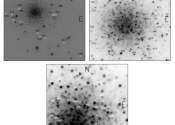
Astronomers explore globular cluster NGC 2419
Using the Indian Astronomical Observatory (IAO) and ESA's Gaia satellite, astronomers have explored a galactic globular cluster known as NGC 2419. Results of the study, published April 29 on the preprint server arXiv, shed ...

A triumph of galaxies in three new images from the VLT Survey Telescope
Distant galaxies, interacting galaxies, whose shape has been forged by the mutual gravitational influence, but also galaxies forming groups and clusters, kept together by gravity—they are the protagonists of three new images ...
Astronomy
May 7, 2024
0
76

Hubble views a galaxy with a voracious black hole
Bright, starry spiral arms surround an active galactic center in this new NASA Hubble Space Telescope image of the galaxy NGC 4951.
Astronomy
May 7, 2024
0
63
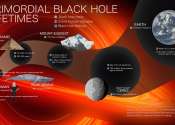
How NASA's Roman mission will hunt for primordial black holes
Astronomers have discovered black holes ranging from a few times the sun's mass to tens of billions. Now a group of scientists has predicted that NASA's Nancy Grace Roman Space Telescope could find a class of "featherweight" ...
Astronomy
May 7, 2024
0
148
Other news

Nature's 3D printer: Bristle worms form bristles piece by piece

Study discovers cellular activity that hints recycling is in our DNA

Life expectancy study reveals longest and shortest-lived cats

GoT-ChA: New tool reveals how gene mutations affect cells

Bilbies could hop back into mild climate zones, study finds

Researchers reveal new cellular mechanical transducer
























































